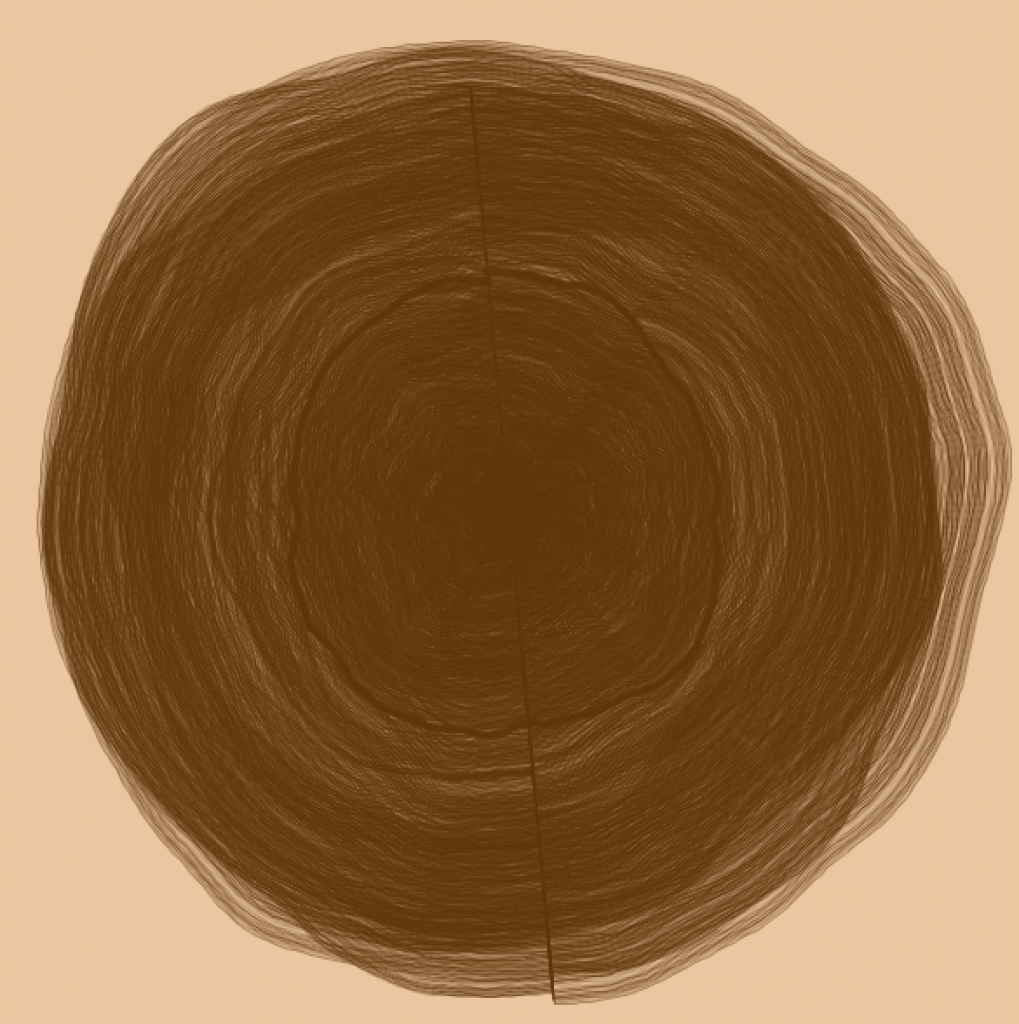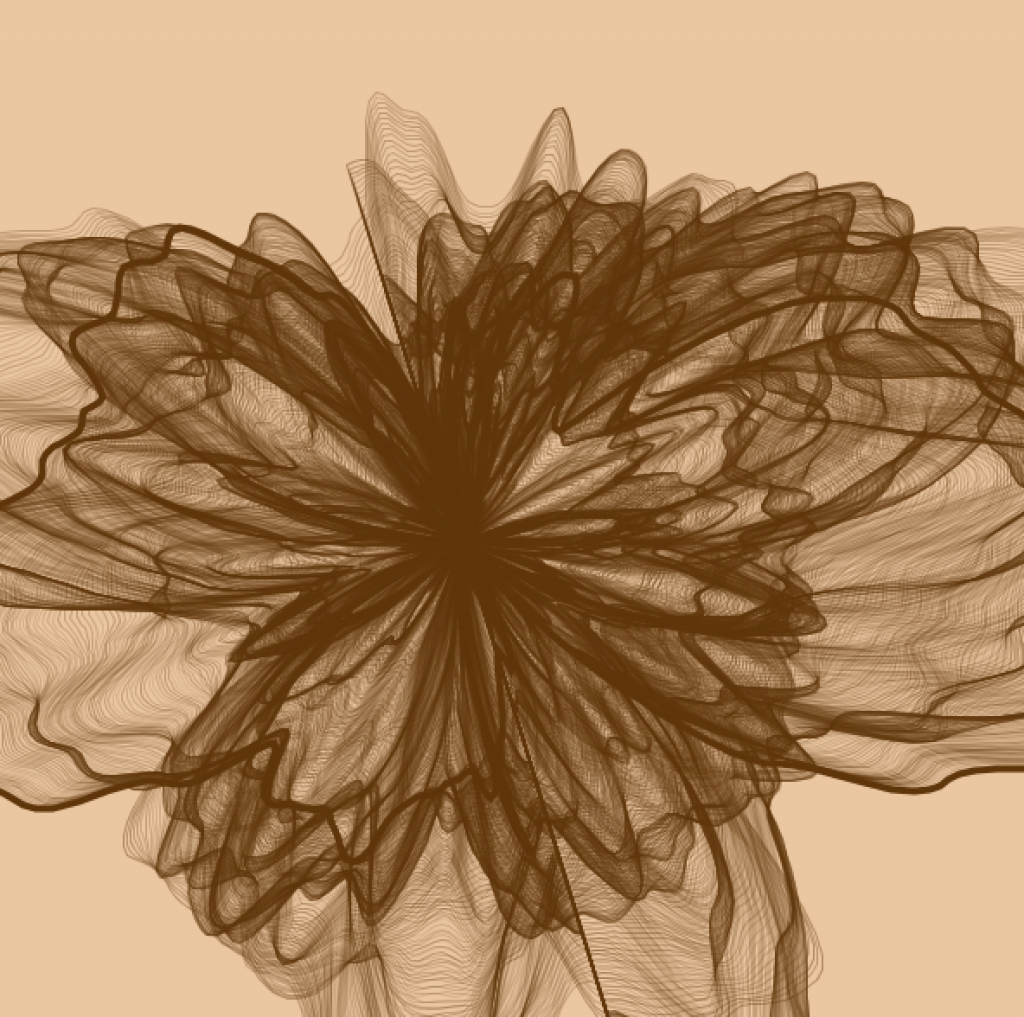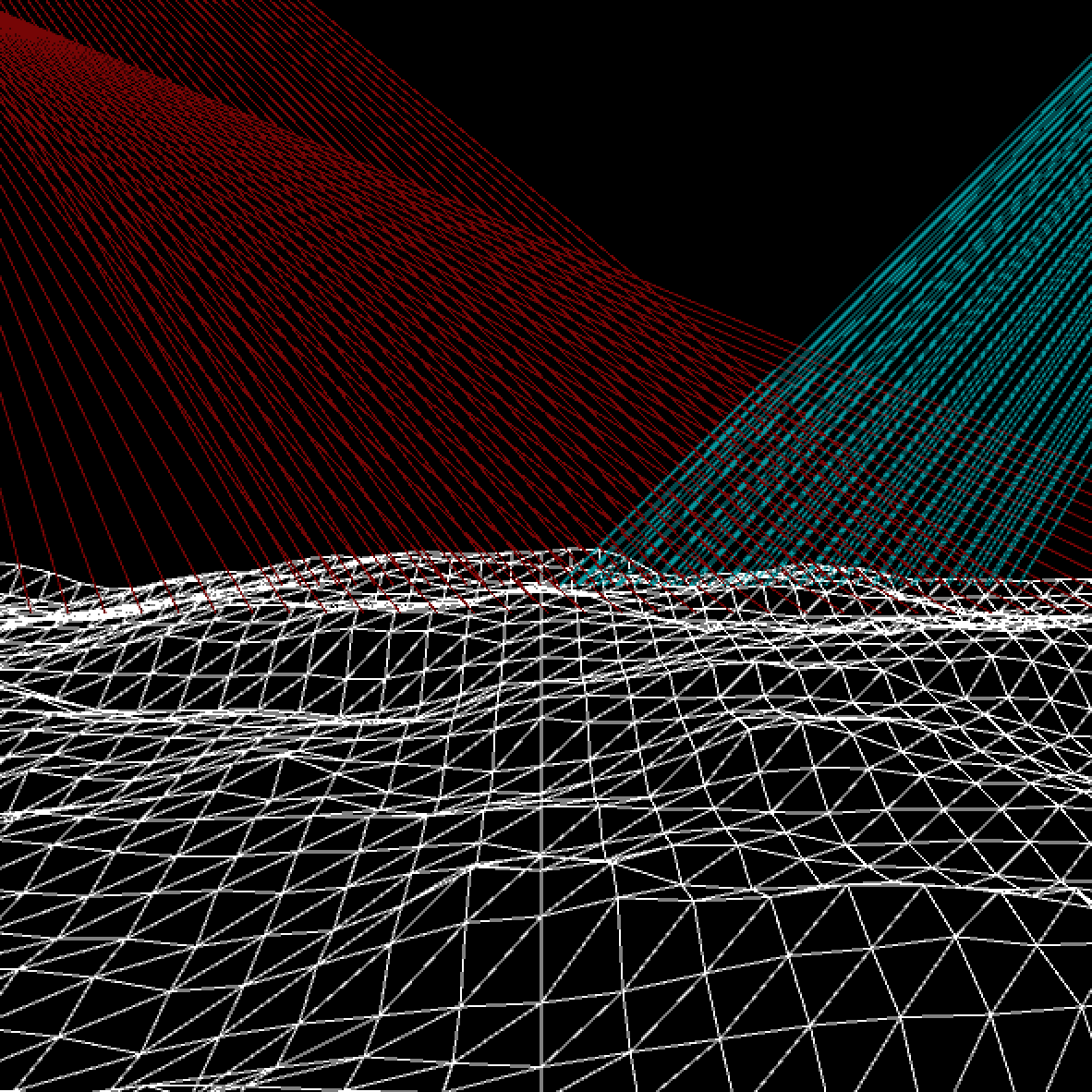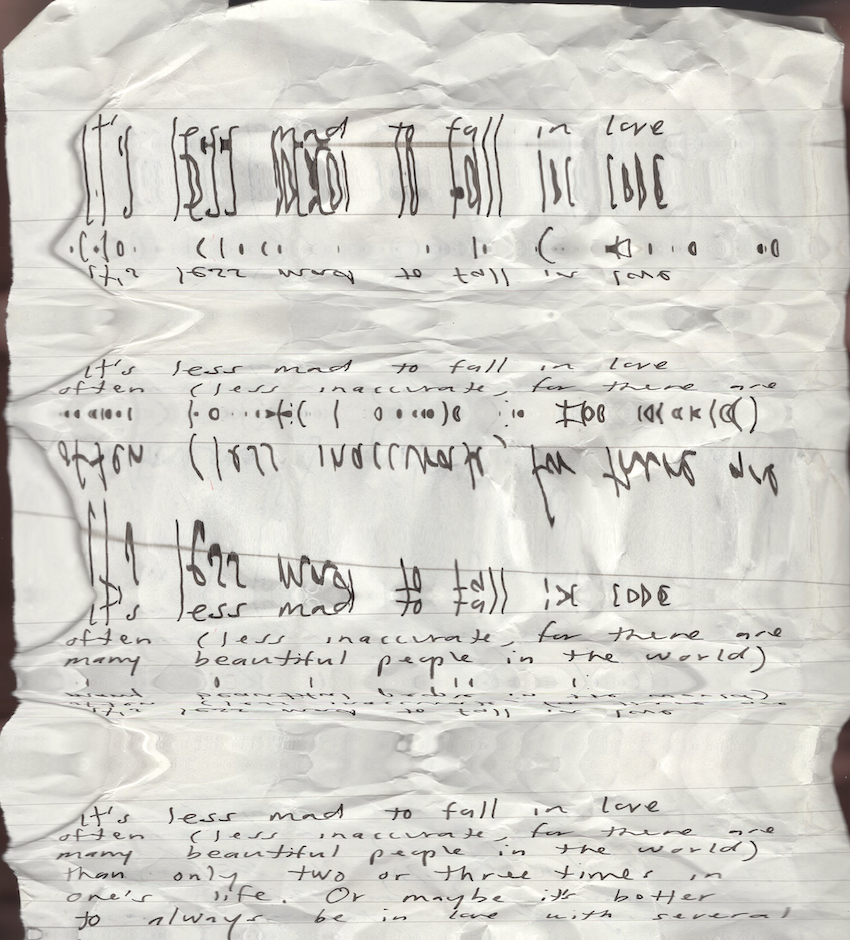
#1 
#2 
#3
The Grace Hertlein prompt was a fun one to recreate, to say the least. Out of all the prompts we’ve had to complete this semester, I enjoyed this one the most. This is mainly because Hertlein took inspiration from natural elements, which I resonate with. Computer art can come across as anatomical and machine-oriented. People usually have a bias towards computer art because the natural element of art is often missing. However, this oxymoron is what makes the art produced even more interesting. The combination of the two contradicting ideas is very fascinating to look at. Trying to recreate the way in which Hertlein combined these ideas is even more captivating than just thinking about it.
I initially experimented with different forms at first. I experimented with the designs that we practiced in class. However, like Hertlein, I found myself drawn to trees. I didn’t want to directly represent trees in my artwork though so I decided to represent the tree rings instead of a more common image of a tree such as the branches or roots. I think abstraction is what makes art complex, thus I wanted to make my representation of a tree trunk more abstract. The desire for abstraction eventually led to me abstracting the original image I created. Prior to that though, it took a lot of trial and error to get a general representation of a tree trunk.
In order to create the base, I made a custom shape. Within the custom shape, I used a for() loop. Instead of using an integer, I used theta as a float. I then used a map for noise, which helps distinguish where the rings end up being placed. The use of incrementing also partakes in the movement of the rings towards the center. The most challenging part was figuring out how to make the loop create the rings. I hadn’t worked too much with cos, sin, and theta in such a context. Once I figured out how to make the rings though, the inconveniences afterward were less technical.
For the second drawing, I made the rings loop. Instead of stopping once they reached the center, I made them go back outwards. This led to the layering of the lines. Due to the fact that I didn’t alternate any other part of the loop, it resulted in a stagnant circle that just became more and more opaque over time. In the final version, I altered the shape in which the rings formed. While the pattern of the tree rings was still present, the general shape became more flowerlike. I personally really like the transition from tree to flower because they’re still both derived from nature but the nuances in their forms present differently to the audience.
In the future, I plan to apply some of Hertlein’s artistic characteristics to my conference work. We both seem to like the influence of nature on our work. Her work has helped me realize that just because art is made on a computer, that doesn’t mean the computer has to have total control over it.
Emma Hoffman


